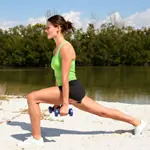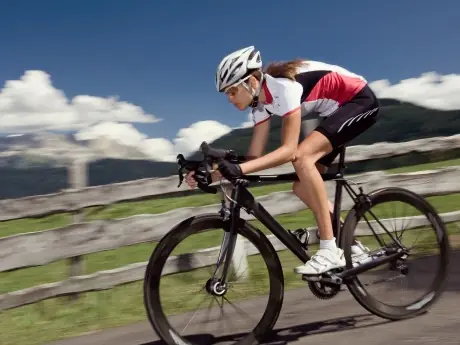
A cyclist looking for an introduction to strength training could easily head to the magazine rack and look for the body builder with giant biceps and a neck the size of a tree trunk gracing the cover.
But it won't help you on the bike. For starters, if you're that massive, you're hindering your power because you have to lug all that braun in the saddle with you.
"They're coming from a body builder's perspective. They focus on moderate resistance with high-volume training," says Dan Kehlenbach. "For athletic-type training, you want to do the opposite. You want to minimize some of the volume and keep the intensity high."
More: 3 Leg-Strengthening Exercises for Cyclists
Kehlenbach is a USA Cycling Level 2 coach and a certified strength and conditioning specialist. He co-wrote Distance Cycling: Your Complete Guide for Long-Distance Rides and has worked alongside many cyclists looking for new ways to improve their performance on the bike. Strength training is a great way to do it—provided you're going about it the right way.
Here are some tips Kehlenbach offers for strength-training newbies:
More: Improve Your Sprint Finish With a Strength Workout
Keep It Simple
Machine weights serve a purpose, but nothing is more practical for your body than your own body weight.
"I find that people using foundation-level strength exercises can develop much more functional strength as a whole," Kehlenbach said. "Exercises that require you to support and stabilize your body as opposed to a machine doing it."
That includes the simple exercises like squats, lunges and step-ups. And as a bonus, you don't need a gym membership to do any of those.
More: 3 Simple Wrist Exercises to Help You Get a Grip
Isolate
Think about how your muscles work on the bike. Your legs are coordinating, but working individually on producing power.
Use that mindset when strength training, too.
"A lot of exercises are bilateral," Kehlenbach said. "But you're only putting pressure down on one pedal at a time. Focus on the principle—with cycling, you're pushing down one at a time, so think about that with the exercises."
The aforementioned lunges and step-ups are great unilateral exercises. Split squats work, too.
"You can also turn a non-functional exercise into a more functional exercise," Kehlenbach said. "If you take something as simple as leg presses and do it one leg at a time, that will make a big difference."
- 1
- of
- 2
About the Author










Discuss This Article